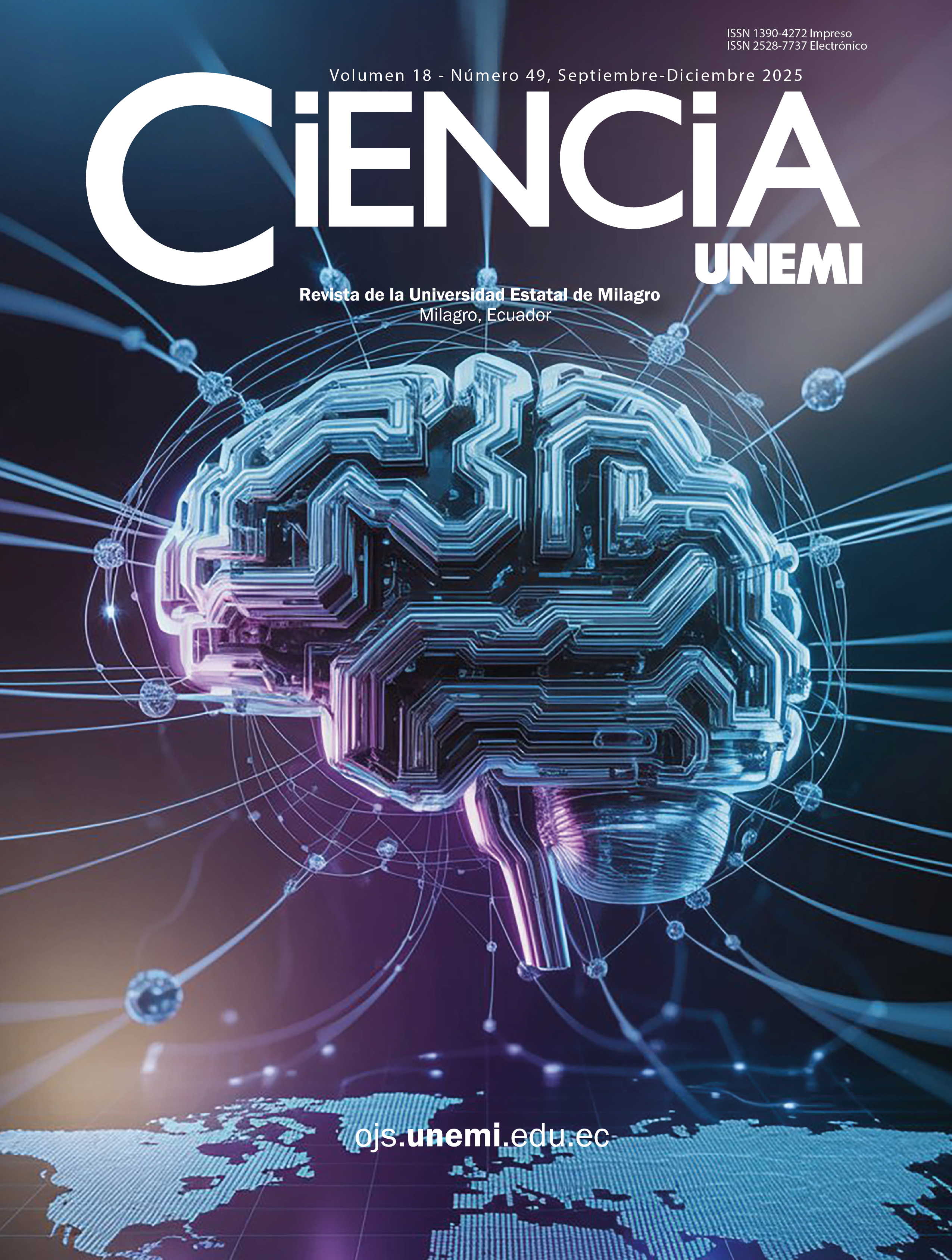The role and impact of learning a second language in the growth and development of intellectual and mental creativity
DOI:
https://doi.org/10.29076/issn.2528-7737vol18iss49.2025pp106-111pKeywords:
Second language acquisition, bilingualism, cognitive flexibility, creative thinkingAbstract
Learning is a cognitive process that engages various mental functions and creativity has the opportunity to emerge in the child's mind and thought; therefore, the development of the child's mental field during the period of learning a second language causes sparks of creativity in his mind that make the child's mentality more active. This study aimed to explore the role of second language learning in fostering intellectual and creative development in children. This study was conducted using an analytical-descriptive approach based on a literature review. According to the results, learning must be based on appropriate educational materials to lead to the development of the child's intellectual creativity. Furthermore, the findings indicated that second language acquisition promotes cognitive flexibility, identity formation, and creativity, depending on the intensity of exposure and practice
Downloads
References
Altma, H. B. (1972). Individualizing the Foreign Language Classroom: Perspectives for Teachers. Rowley, Mass: Newbury House.
Bialystok, E., Craik, F.I.M., Luk, G. (2008). Lexical access in bilinguals: Effects of vocabulary size and executive control. Journal of Neurolinguistics. 21(6):522–538. https://doi.org/10.1016/j.jneuroling.2007.07.001
Bialystok, E. (2005). Consequences of Bilingualism for Cognitive Development. In J. F. Kroll & A. M. B. de Groot (Eds.), Handbook of bilingualism: Psycholinguistic approaches (pp. 417–432). Oxford University Press.
Blumenfeld, H.K., Marian, V. (2007). Constraints on parallel activation in bilingual spoken language processing: Examining proficiency and lexical status using eye-tracking. Language & Cognitive Processes. 22(5):633-60. http://dx.doi.org/10.1080/01690960601000746
Barak, L. (2017). Developmental psychology, translated by Yahya Seyed Mohammadi, Volume 2, Tehran, Arasbaran Publications.
Coggins, P. E., Kennedy, T. J., & Armstrong, T. A. (2004). Bilingual corpus callosum variability. Brain and language, 89(1): 69–75. https://doi.org/10.1016/S0093-934X(03)00299-2
Colzato, L. S., Bajo, M. T., van den Wildenberg, W., Paolieri, D., Nieuwenhuis, S., La Heij, W., & Hommel, B. (2008). How does bilingualism improve executive control? A comparison of active and reactive inhibition mechanisms. Journal of experimental psychology. Learning, memory, and cognition, 34(2): 302–312. https://doi.org/10.1037/0278-7393.34.2.302
Doustizadeh, M., Seyedi Fazlollahi, N. (2022). The effect of creativity and autonomy on individual identity in german language teaching - investigating the role of educational games on students' independent learning behavior. Foreign Language Research Journal, 12 (2): 19-36. https://doi.org/10.22059/jflr.2022.328893.908
Geravand, K. (2024). Exploring the relationship between creative problem solving and reading comprehension among Iranian EFL students. School education in the third millennium, 2(1): 33-44. doi: 10.22034/jsetm.2024.455471.1033
Ghonsooly, B., Showqi, S. (2012). The effects of foreign language learning on creativity. English Language Teaching. 5(4):161-67. https://doi.org/10.5539/elt.v5n4p161
Kharkhurin, A. V. (2009). The role of bilingualism in creative performance on divergent thinking and invented alien creatures tests. The Journal of Creative Behavior, 43(1): 59–71. https://doi.org/10.1002/j.2162-6057.2009.tb01306.x
Leikin, M., Tovli, E., Malykh, S. (2014). Bilingualism and creativity in early childhood. Creativity Research Journal. 3(2):54-63. https://doi.org/10.5430/elr.v3n2p54
Müller, N., & Hulk, A. (2001). Crosslinguistic influence in bilingual language acquisition: Italian and French as recipient languages. Bilingualism: Language and Cognition, 1: 1–21. https://doi.org/10.1017/S1366728901000116
Pallant, J. (2010). SPSS survival manual: A step by step guide to data analysis using the SPSS program [Rezaei A, Persian trans]. 4th ed. Tabriz: Forouzesh.
Poarch, G.J., Bialystok, E. (2015). Bilingualism as a model for multitasking. Developmental Review. 35:113–24. https://doi.org/10.1016/j.dr.2014.12.003
Rössler, W., Hoff, P. (2004). Psychiatrie zwischen Autonomie und Zwang. Berlin: Springer Verlag.
Salahi, A. A. (2016), Identity, Tehran: Protected Scroll.
Salahi, A.A., Kabiri, M. H., Cheraghi, A., Mohammadi Kalheri, S., Tonkar, N. (2018). Adolescence and identity, Shahid Sattari University of Aeronautical Sciences and Technology.
Yousefi, R., Soleimani, M., & Ghazanfariyanpoor, S. (2017). Comparison between switching and creativity among bilingual and monolingual children. Journal of rehabilitation, 18(1): 1-12. http://dx.doi.org/10.21859/jrehab-18011
Wiseheart, M., Viswanathan, M., Bialystok, E. (2014). Flexibility in task switching by monolinguals and bilinguals. Bilingualism: Language and Cognition. 19(1):141-146. https://doi.org/10.1017/s1366728914000273
Downloads
Published
Issue
Section
License
Copyright (c) 2025 CIENCIA UNEMI

This work is licensed under a Creative Commons Attribution-NonCommercial-NoDerivatives 4.0 International License.
Authors can keep the copyright, granting the journal right of first publication. Alternatively, authors can transfer copyright to the journal, which allow authors non-commercial use of the work, including the right to place it in a file open access.
















